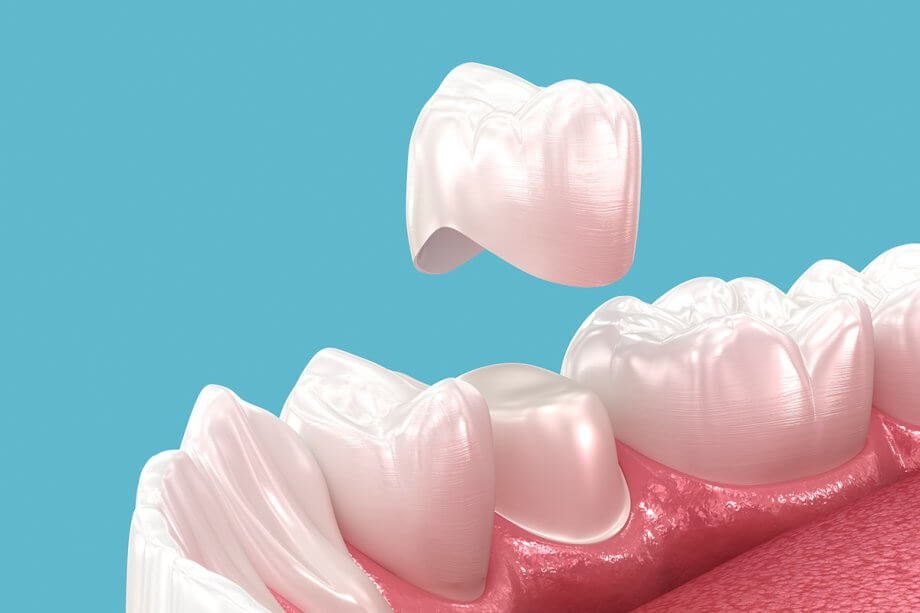When a tooth suffers significant damage from decay or an injury, saving it becomes our top priority. A dental crown often presents the ideal solution, restoring a tooth’s strength, function, and appearance. Many patients ask us, "Is there enough of my tooth left to support a crown?" It's an excellent question, as the success of this restorative procedure hinges on having a sufficient foundation.
We want to walk you through the specifics of what makes a tooth a good candidate for a crown. We will explore the amount of healthy tooth structure necessary, what happens during the procedure, and what alternatives exist if a crown isn't the right fit for your situation. Understanding these details helps you make informed decisions about your oral health.
What Exactly Is a Dental Crown?
Think of a dental crown as a custom-fitted helmet for your tooth. We design this durable cap to cover the entire visible portion of a damaged or weakened tooth, right down to the gumline. Its primary job is to provide protection and reinforcement, preventing further breakage and shielding the sensitive inner layers from bacteria.
Crowns can restore a tooth's original shape, size, and strength, dramatically improving its appearance. We craft them from various materials, with porcelain being a popular choice because it beautifully mimics the translucency and color of natural enamel. This variety of materials enables us to create a seamless restoration that seamlessly blends with your smile.
The Benefits of Choosing a Crown
Opting for a dental crown offers several significant advantages. The most important benefit is that you preserve your natural tooth root. Keeping the root intact in your jawbone stimulates the bone, preventing the bone loss that can occur when a tooth is completely lost. This feature helps maintain your facial structure and the alignment of surrounding teeth.
From a functional standpoint, a crowned tooth feels and works just like a natural one. You can chew and speak with confidence. Additionally, placing a crown is often a more conservative and cost-effective approach compared to extracting the tooth and replacing it with a bridge or dental implant.
The Journey to a New Crown
The process of receiving a dental crown involves a few key steps to ensure a perfect fit and a lasting result. At our practice, we prioritize your comfort and convenience, which is why we proudly offer Same-Day Crowns.
Preparing the Tooth
Our first step is to carefully evaluate the tooth and remove any decay or damaged areas. We then gently reshape the remaining tooth structure to ensure a proper fit. This shaping creates the necessary space for the crown to fit over the tooth without appearing bulky. Precision is crucial here to ensure the crown sits flush with your other teeth and supports a healthy bite.
Digital Impressions and Custom Design
After preparing the tooth, we use advanced digital scanning technology to take highly accurate impressions of your mouth. This comfortable, mess-free process eliminates the need for traditional putty-like impression materials. We use these digital models to design your permanent crown right here in our office. We meticulously match the color, shape, and size to your unique smile for a flawless, natural look.
Creating and Placing Your Same-Day Crown
With the design finalized, our in-office milling machine crafts your custom crown from a solid block of high-quality ceramic. This process is speedy. Once the crown is ready, we check its fit and appearance before permanently bonding it to your prepared tooth. You leave our office in a single visit with a fully restored, functional, and beautiful tooth. This modern approach saves you the time and hassle of wearing a temporary crown while waiting weeks for a lab to create the final restoration.
What If There Isn't Enough Tooth Structure?
For a crown to be successful, it needs a solid foundation to adhere to. Generally, we look for at least two millimeters of healthy tooth height above the gumline. This provides the necessary surface area for a strong, stable bond. But what happens when extensive decay or a fracture leaves less than this ideal amount?
Crown Lengthening: Creating a Better Foundation
In situations where a tooth has broken off near the gumline, we may recommend a procedure called crown lengthening. During this process, we carefully reshape the gum tissue and, in some cases, the underlying bone around the tooth. This procedure exposes more of the tooth's surface, effectively "lengthening" it and creating the necessary foundation for a crown.
A periodontist or a dentist with specialized training typically performs this procedure. It is a predictable way to save a tooth that might otherwise require extraction. We will thoroughly assess your oral health to determine if you are a suitable candidate for crown lengthening.
Exploring Alternatives to Dental Crowns
Sometimes, a tooth is too compromised for even crown lengthening to be effective. Suppose there isn't enough healthy structure left to build upon; extracting the tooth may be the only viable path forward to protect your overall oral health. When this happens, we have excellent options for replacing the missing tooth.
Dental Implants: The Gold Standard in Tooth Replacement
A dental implant is a sophisticated solution that replicates the entire structure of a natural tooth. We surgically place a small, biocompatible titanium post into your jawbone. This post acts as an artificial tooth root. Over time, the implant fuses with the surrounding bone in a process called osseointegration, creating a firm and stable foundation.
Once the implant is secure, we attach a custom-made crown to it, restoring both the appearance and function of your smile. Dental implants are the premier tooth replacement option because they look, feel, and function just like natural teeth. They also help preserve jawbone density and do not require altering adjacent healthy teeth.
Dental Bridges: A Tried-and-True Solution
Another effective option is a dental bridge. A bridge literally "bridges" the gap left by a missing tooth. It consists of an artificial tooth, called a pontic, which is anchored in place by crowns attached to the healthy teeth on either side of the gap. These adjacent teeth, known as abutment teeth, provide support for the entire restoration.
Bridges are a reliable and aesthetically pleasing way to restore both your smile and your ability to chew correctly. While this option requires us to prepare the neighboring teeth for crowns, it is often a faster and more affordable treatment than a dental implant. We will discuss the pros and cons of each option with you to help you choose the best one for your needs.
Frequently Asked Questions About Dental Crowns
How long does a dental crown typically last?
With proper care and maintenance, a dental crown can last for many years. The lifespan of a crown often ranges from 10 to 15 years, but many can last much longer. Factors that influence its longevity include the material it's made from, your oral hygiene habits, the location of the tooth, and avoiding habits like grinding your teeth or chewing on hard objects like ice. Regular dental check-ups allow us to monitor the condition of your crown and ensure its continued success.
Is the dental crown procedure painful?
We prioritize your comfort throughout the entire dental crown procedure. Before we begin preparing the tooth, we will administer a local anesthetic to numb the tooth and the surrounding tissues completely. You should not feel any pain during the treatment. After the procedure, as the anesthetic wears off, you may experience some minor sensitivity or tenderness, but this is usually temporary and can be easily managed with over-the-counter pain relievers.
At JM Dental of Westbury, we are a dedicated team of professionals who have proudly served our community for years, building lasting relationships based on trust and exceptional care. We combine advanced technology with a compassionate, patient-first approach to help you and your family achieve and maintain healthy, beautiful smiles. If you have a damaged tooth or have questions about restorative dentistry, we invite you to schedule a consultation with us today.

